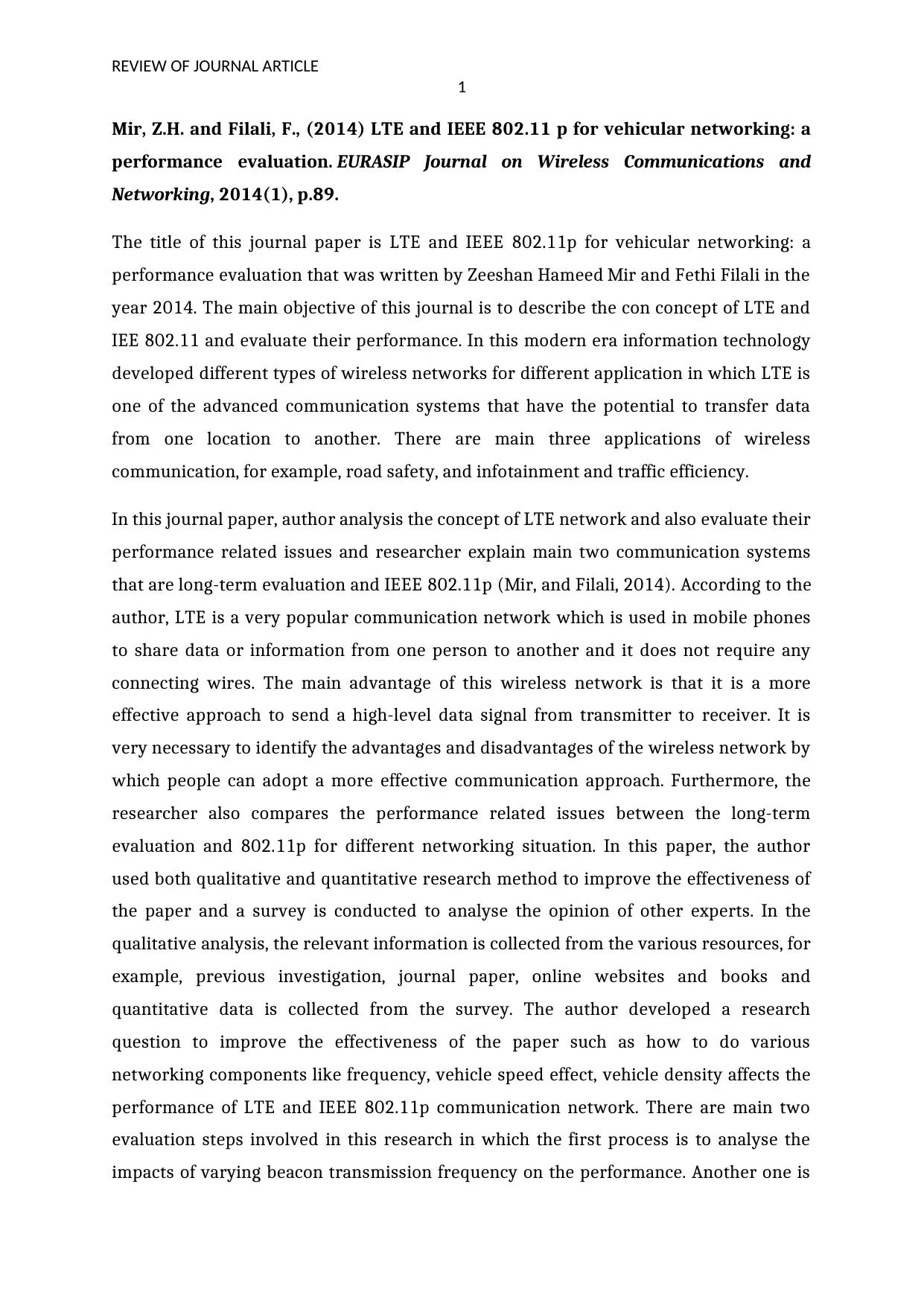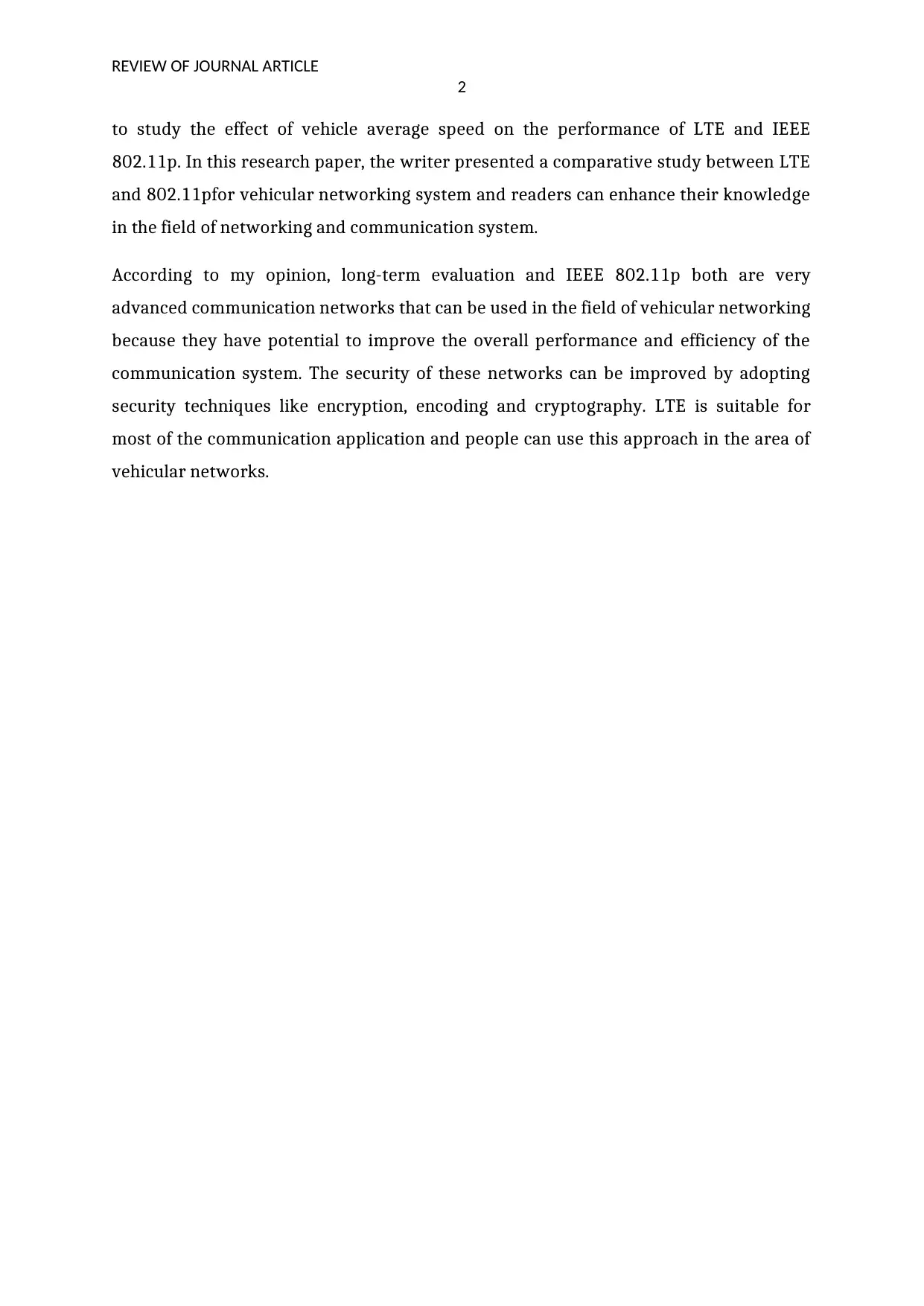MITS4004: Analyzing LTE and IEEE 802.11p for Vehicular Networks
VerifiedAdded on 2023/05/27
|4
|641
|200
Report
AI Summary
This document presents a review of the journal article 'LTE and IEEE 802.11 p for vehicular networking: a performance evaluation' by Mir and Filali (2014). The review highlights the main objective of the paper, which is to describe the concepts of LTE and IEEE 802.11p and evaluate their performance in the context of vehicular networks. The author of the review discusses the applications of wireless communication, such as road safety, infotainment, and traffic efficiency, and analyzes the advantages and disadvantages of LTE and IEEE 802.11p. The review also mentions the use of qualitative and quantitative research methods, including a survey, to improve the effectiveness of the paper. Furthermore, the review presents the research questions and evaluation steps involved in the study, focusing on the impact of varying beacon transmission frequency and vehicle speed on the performance of LTE and IEEE 802.11p. The reviewer concludes that both LTE and IEEE 802.11p are advanced communication networks suitable for vehicular networking and suggests improving their security through encryption and cryptography.
1 out of 4










![[object Object]](/_next/static/media/star-bottom.7253800d.svg)